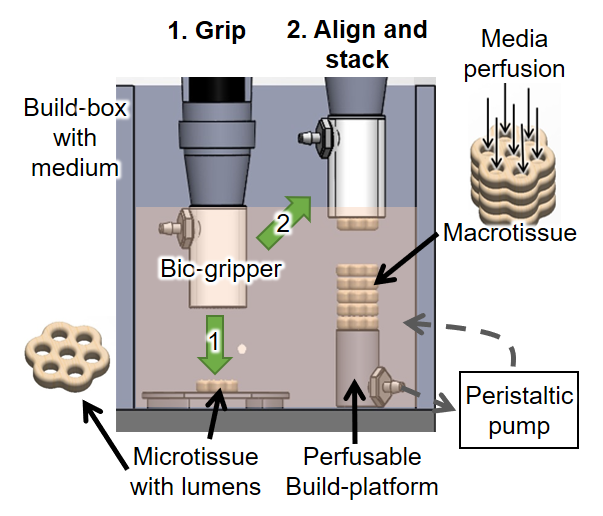Organs in the body contain billions of cells packed together at high density, requiring continuous blood flow through the organ to deliver nutrients and remove waste products. If organs are ever to be fabricated, new strategies are needed to build cell dense organs and to continuously perfuse them with nutrient-rich medium. The article “Perfused Organ Cell‐Dense Macrotissues Assembled from Prefabricated Living Microtissues” in Advanced Biosystems by Jeffrey R. Morgan et al. (Brown University) demonstrates the ability of the Bio-Pick, Place and Perfuse (Bio-P3) instrument to build centimeter sized “macrotissues”, layer-by-layer.

These built macrotissues have cells at high cell density and are perfused with medium as they are being built. The Bio-P3 uses fluid suction to pick up and stack living building parts. Each building part is comprised of about 14 million cells and is formed by a mold into the shape of a honeycomb of about 2 cm across. Once gripped by the Bio-P3, these building parts are stacked and the holes of the honeycombs aligned so that nutrient-rich medium can be continuously perfused through the macrotissue.
The layers of the living building parts simultaneously fuse to form a single macrotissue. The authors used a human liver cell line to build centimeter sized macrotissues (14 mm x 14 mm x 5 mm) with 25 layers, as many as 100 million cells and showed that the macrotissues can perform liver functions. This article also presents a mathematical model to determine the ideal parameters for optimizing macrotissue viability. The macrotissues built using the Bio-P3 are a valuable milestone for further advancement towards the goal of organ engineering.
Kindly contributed by Authors.

















